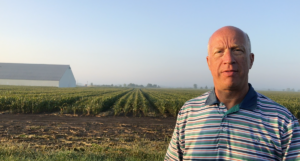National Agriculture Day is celebrated on March 22. This 49th anniversary of National Ag Day is being celebrated in classrooms and communities across the country with a 2022 theme of “Growing a Climate for Tomorrow.”
In a virtual Ag Day event, the Agriculture Council of America (ACA) will bring approximately 100 college students to Washington D.C. to “virtually” deliver the Ag Day message to the Hill. A core leadership team of college students will attend D.C. events in person. There will also be a Celebration of Modern Agriculture on the Mall, and the winner of the ACA’s national Ag Day essay contest will be announced.
These events mark a nationwide effort to tell the true story of American agriculture, to remind citizens that agriculture is a part of all of us. Many agricultural associations, corporations, students, and government organizations involved in agriculture are expected to participate.
The National Ag Day program encourages every American to:
- Understand how food and fiber products are produced.
- Appreciate the role agriculture plays in providing safe, abundant and affordable products.
- Value the essential role of agriculture in maintaining a strong economy.
- Acknowledge and consider career opportunities in the agriculture, food and fiber industry.
For more information on National Ag Day, visit www.agday.org.
Here’s a short video highlighting some Farm Facts:
Related Posts

This Week in Ag #41
This is American agriculture’s big week – Thanksgiving! Our celebration of food takes center stage on family dining tables from sea to shining sea. Not only do we honor the 1% who currently feed us, we also reflect upon the many contributions of the original American agriculturalists, our Native Americans. For starters, they saved the Pilgrims from starvation during their first years in the New World. The Wamponoag tribe utilized their famous “Three Sisters” cropping practice: corn, beans and squash.

This Week in Ag #28
The recent fertilizer market may be best described by two catch phrases: “wait-and-see” and “just in time.” In the fall of 2021, sky-rocketing energy prices pointed toward looming inflation and an inevitable rise in fertilizer prices. Many savvy growers, including those aligned with the regen ag movement, hedged their bets by purchasing crop nutrients that

Welcome to Huma®: Humic Solutions with a Human Touch
I am extremely proud to officially unveil our company’s new branding and name. We are now Huma®– a 50-year-old legacy ready to be reintroduced to the world! It is a strategic decision to shorten our name from Bio Huma Netics® (BHN) to Huma® and we are confident that this progressive move is in our company

